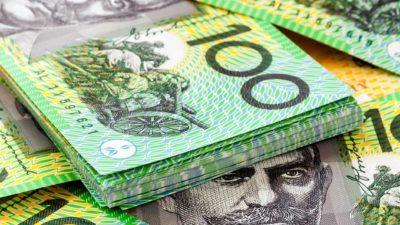The following three stocks have a high dividend yield.
So, what does this mean?
A dividend yield is calculated by taking the number of dividends paid per share and dividing it by the current price of the stock.
For many investors, watching a company's dividend yield is a good way to keep track of how much cash flow you are getting for each dollar invested.
And while watching dividend yields can be one way to measure if you're getting enough return on your investment from dividends, it can also be a little misleading.
Dividend yields can push higher if the share price is falling or if some sort of one-off special dividend has skewed the calculation.
These three stocks have what would be considered high dividend yields at present.
See below for a closer look.
Alumina Limited (ASX: AWC)
Bauxite miner Alumina Limited has a current dividend yield of 8.47% and has certainly had a successful 12 months of share price rises, with Alumina shares having a very good day on the market today – up 9.1% at the time of writing to $3.04 at the top of the S&P/ASX 200 gains list.
The shut-down of Brazil's Alunorte refinery – one of the world's largest alumina refineries in the world – is likely behind Alumina's share price surge today, with Alumina's peer South32 Ltd (ASX: S32) shares also on the up, rising 6.4% to $4.21 at the time of writing.
Alumina shares have also likely seen a surge off the back of the announcement of an end to industrial action at Alcoa of Australia after a new enterprise bargaining agreement was reached.
Alumina owns 40% of Alcoa.
Alumina delivered some impressive half-year results back in late August with NPAT up 110% to $286 million from $137 million for the previous corresponding period with Alumina also declaring a US8.6c per share interim dividend.
For the time being, Alumina's trajectory of growth looks set to continue, particularly with Alcoa back on track and the indefinite closure of Alunorte.
Genworth Mortgage Insurance Australia (ASX: GMA)
Lenders mortgage insurance provider Genworth Mortgage Insurance Australia is trading with a dividend yield of 8.26%, but its share price is falling at present, down from mid-August highs of $2.92 to sit at $2.42 at the time of writing.
In fact, Genworth will be dumped from the S&P/ASX 200 after a quarterly rebalance saw Genworth removed from the benchmark alongside pet care retailer Greencross Limited (ASX: GXL).
This is one of those situations where the dividend yield gives you a skewed perspective.
Genworth's high dividend yield is likely a result of its share price slump at present, with its share price sliding consistently since the release of fairly disappointing half-year results, with underlying NPAT down 55%.
A fully-franked interim dividend of 8c per share and a fully-franked special dividend of 4c per share were both payable on August 30, but despite how healthy its dividend yield looks, Genworth's growth profile is questionable at the moment.
National Australia Bank Ltd. (ASX: NAB)
Financial services big bank National Australia Bank is trading at a 7.28% dividend yield, as its share price sits up marginally at the time of writing to $27.22 – relatively low for NAB, with its price point at this time last year at $31.13.
It is hard to say what the long-term future will hold for any of the big banks without the full outcomes of the Banking Royal Commission known, but one thing is for sure, NAB did not need the class action it was slapped with late last week concerning questionable insurance sales to lower socio-economic customers.
Big bank brother Commonwealth Bank of Australia (ASX: CBA) grappled with similar allegations earlier this year, leading to a refund of more than $10 million to affected customers.
For now, the big banks are underperforming the S&P/ASX 200 index and the chances of sustained earnings issues in the sector are very real as regulatory changes imposed as a result of the royal commission come into play in the future.
Foolish Takeaway
With the average dividend yield at about 4% – a figure that can be skewed by companies who pay no dividends – an above average dividend yield is certainly worth a look into, but step warily, do your research and don't look at just yield alone





